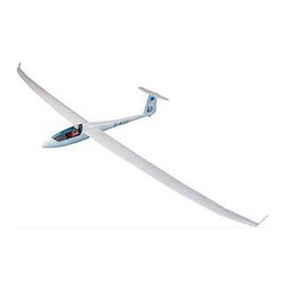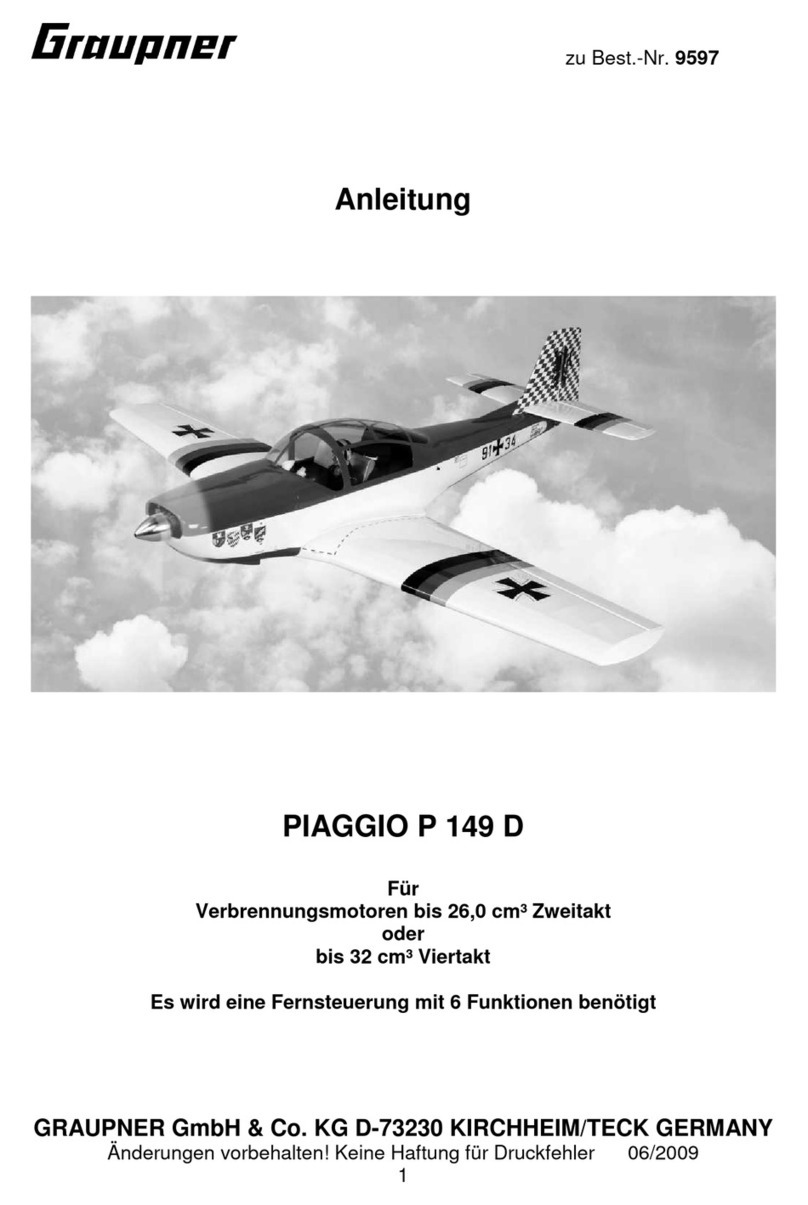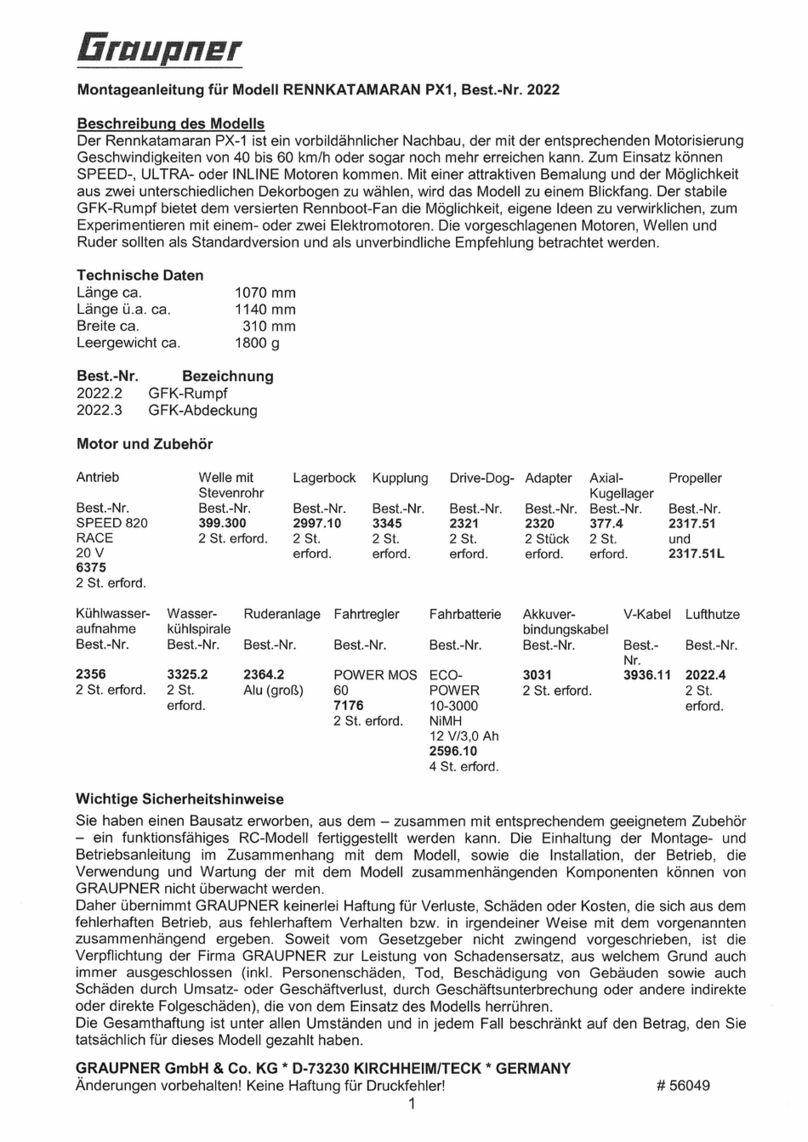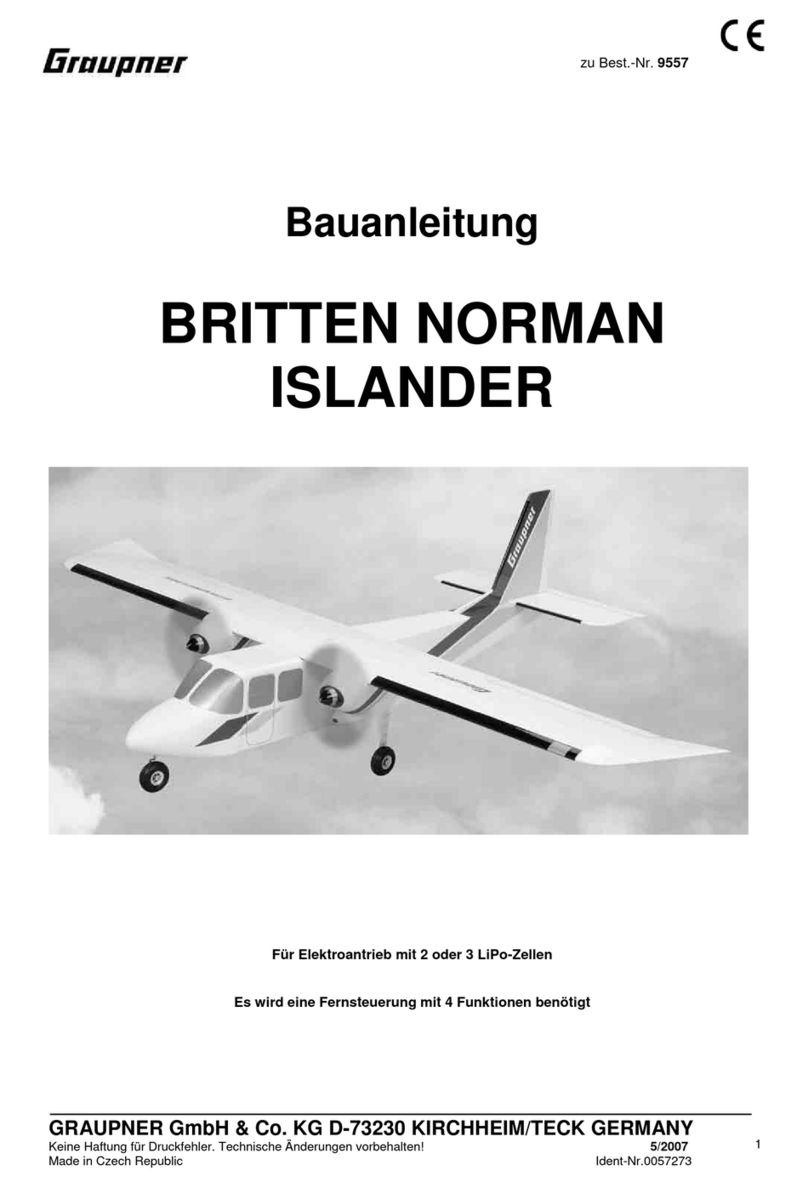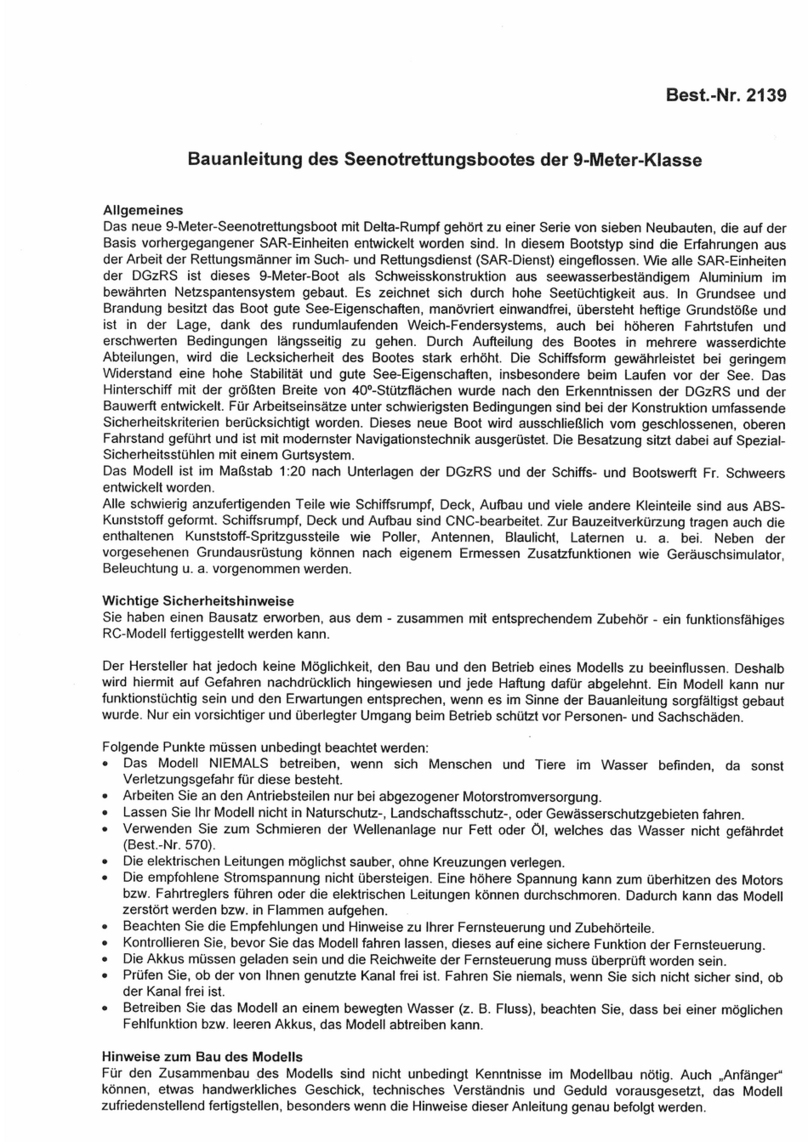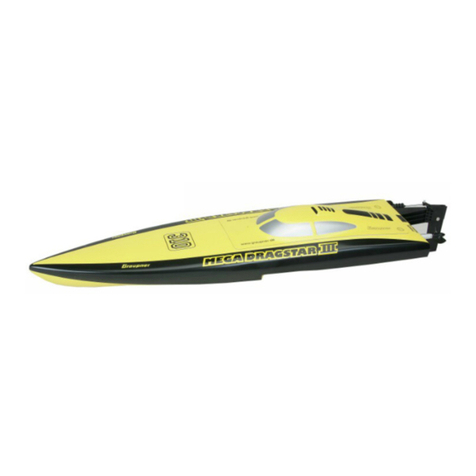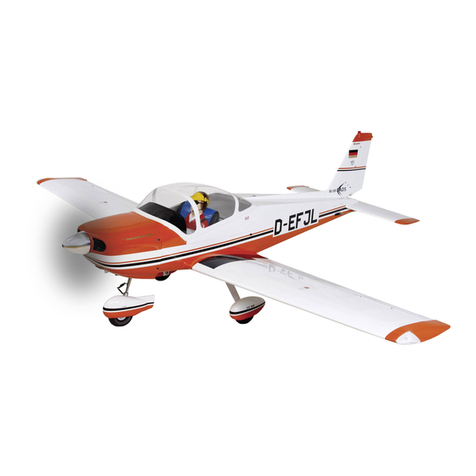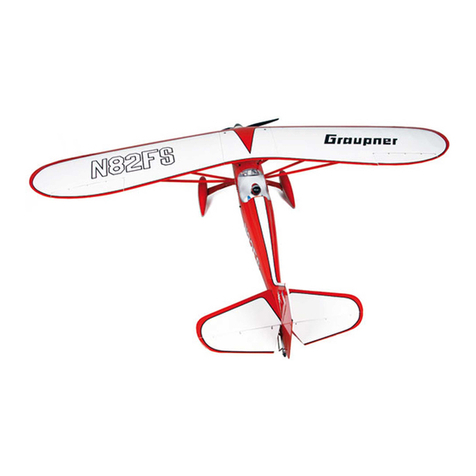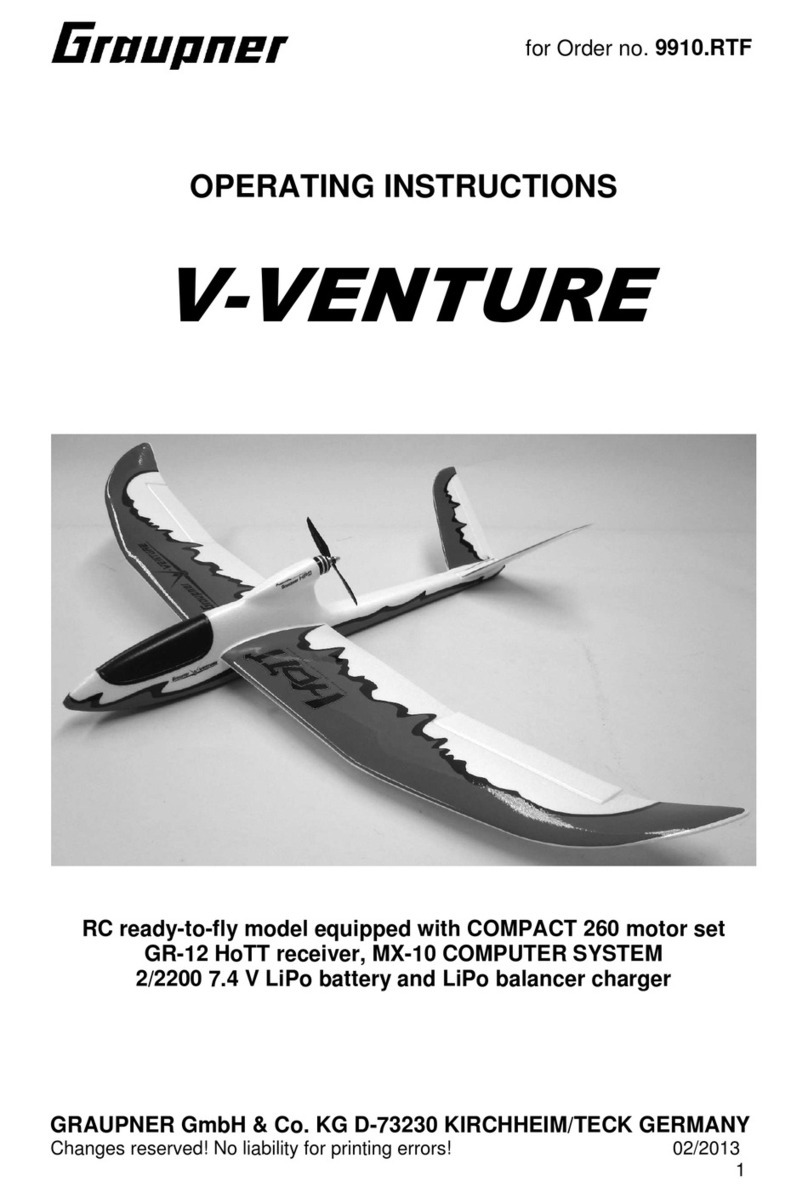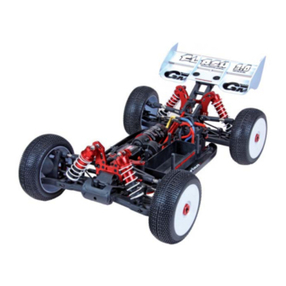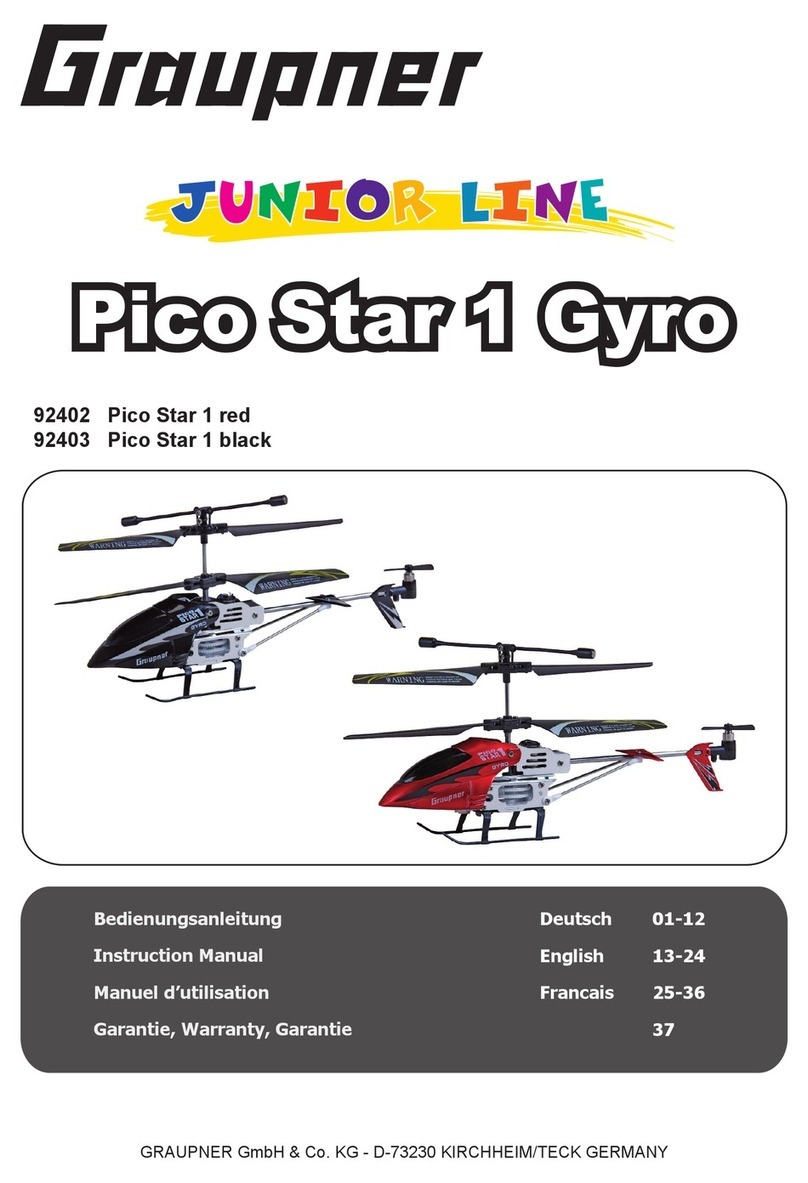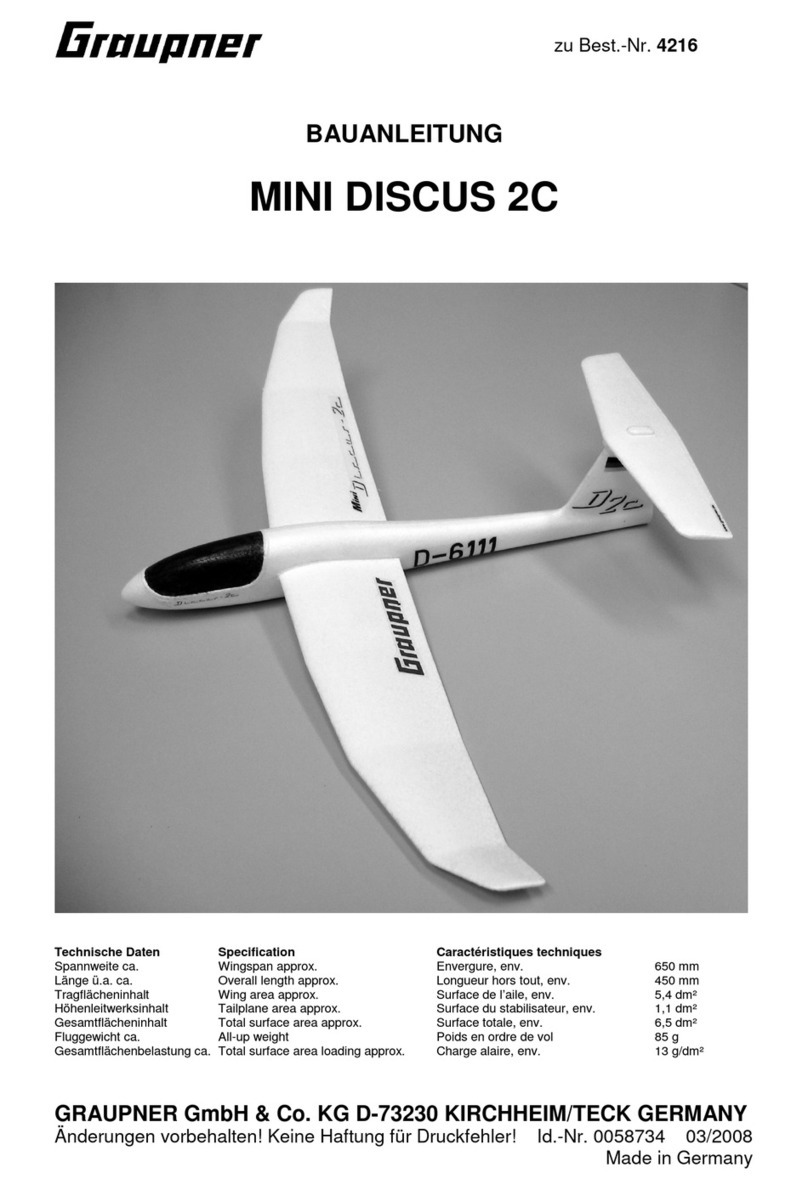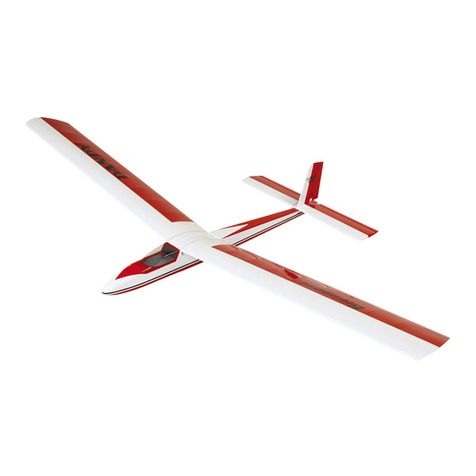
GRAUPNER GmbH & Co. KG D-73230 KIRCHHEIM/TECK GERMANY
Modifications reserved! No liability for printing errors. Id.-No. 0062205 06/2011
2
It is essential to read and observe the Safety Notes in the Appendix to these instructions. If you
ever dispose of the model, be sure to pass on these safety notes to the new owner, together
with the complete building instructions.
Introduction
The LEKI EXTRA 330SC is a superbly manoeuvrable RC aerobatic model which is
an excellent choice for simple aerobatics and extreme 3-D flying alike. Please note:
the aeroplane is by no means suitable for beginners. The model is very highly
pre-fabricated, but nevertheless the construction stages described in these instruc-
tions must be carried out with great care, otherwise we cannot guarantee that the
model will fly accurately and safely. The all-up weight must not exceed 1350 g.
RC system accessories and electric power system components (not included)
You will need the items listed below in order to complete and operate the model.
GRAUPNER MX-16 2.4 HoTT RC system Order No. 4755
Transmitter charge lead Order No. 3022
Charge lead with G3.5 connector Order No. 2970.L
ULTRAMAT 16S battery charger Order No. 6468
3/2200 LiPo flight battery, 45C Order No. 9722.3
Servo extension lead, 100 mm (two required) Order No. 3935.11
Servo extension lead, 180 mm (two required) Order No. 3935.18
Servo extension lead, 500 mm (two required) Order No. 3935.50
DES 476 BB servo (four required) Order No. 7915
COMPACT CONTROL 45BEC speed controller Order No. 7224
Tools and adhesives required (not included)
Balsa knife Order No. 980
Screwdriver Order No. 5779.1
Allen key, 1.5 mm A/F Order No. 5775.1,5
Cyano-acrylate adhesive (“cyano”) Order No. 5821
Cyano activator (“kicker”) Order No. 953.150
You will also need the following items: 11 mm A/F open-ended spanner, flat-nose
pliers, paper scissors, felt-tip pen.
Building instructions
Please read right through these building instructions before you start building, so that
you have a clear idea of the sequence required. Before each stage identify all the
parts, tools and adhesives you will need, and place them ready. Use a sharp balsa
knife to remove rough edges from the airframe components, and cut through any
temporary lugs produced by the moulding process. Do NOT separate the control
surfaces; instead flex them to and fro several times to free up the moulded hinges.
When working on foam components always lay the parts on a clean, smooth surface,
or a layer of soft foam. Use cyano glue and activator for all joints unless the instruc-
tions specifically state otherwise. The best method is to apply glue to one face, then
spray activator on the mating face before bringing the parts together.
Cyano-acrylates must not contact any part of your body, and especially not the
eyes. For this reason we recommend that you wear protective goggles when
using this material. Store the adhesive out of the reach of children. Do not use
